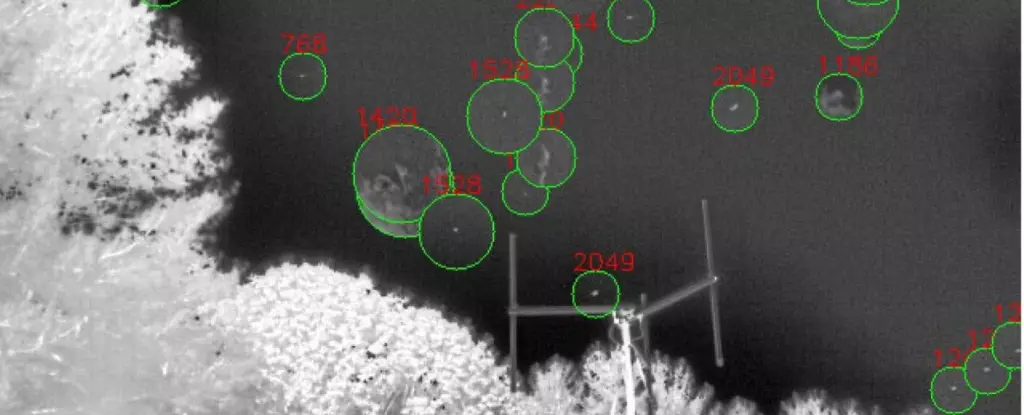In recent years, the subject of Unidentified Aerial Phenomena (UAP), often colloquially referred to as UFOs, has shifted from the realm of fringe speculation to a topic of serious scientific inquiry. The release of government reports, especially by the Office of the Director of National Intelligence (ODNI) in 2021, has catalyzed public interest and scientific discourse about these mysterious entities that dart across our skies. Yet, while bureaucratic reports have surfaced, tangible scientific data on UAPs remains sparse. This gap poses significant questions about our understanding of the phenomena, and initiatives like the one spearheaded by the Harvard-Smithsonian Center for Astrophysics (CfA) and the Galileo Project offer a groundbreaking approach to this mystery.
The Challenge of UAP Data Scarcity
Despite the intriguing nature of UAPs, data has been largely inaccessible for many years. The primary issue lies not in the existence of the phenomena, but in the reluctance of governmental bodies to release comprehensive information, often citing national security concerns. These classified data uncertainties hinder the scientific community’s ability to analyze UAPs systematically. According to Professor Avi Loeb, the distinguished head of the Galileo Project, much of the governmental data remains undisclosed due to its classified provenance or its inadequacy in providing discernible insights. This situation necessitates a shift towards an open scientific exploration of the skies.
Loeb’s observations resonate deeply within the scientific community, underscoring that while much of the U.S. government’s data is shrouded in secrecy, the sky itself is an open canvas awaiting exploration. This reflects a broader trend in scientific inquiry that emphasizes transparent collaboration and data sharing, especially when it concerns phenomena that could redefine our understanding of the universe.
The Dalek Initiative: A New Frontier in UAP Research
To address these challenges, the Galileo Project proposes an innovative solution—the All-Sky Infrared Camera, affectionately termed ‘Dalek,’ after the iconic villain from the Doctor Who series. This instrument embodies the essence of modern technological advancements in astrophysics and UAP research. Designed with the intent to continuously monitor potential extraterrestrial craft across the sky, Dalek draws upon the recommendations articulated in a recent NASA study. The goal is to create purpose-built sensors that can adapt on millisecond timescales, facilitating effective detection and analysis of transient phenomena.
The development of Dalek represents a crucial evolution in UAP research methodology. By harnessing multisensor platforms, the project aims to accumulate a wealth of data that can provide critical insights into UAP characteristics—their shape, motion, color, and even acoustic signatures. These multifaceted observations are pivotal for distinguishing between conventional objects and potential anomalies, ultimately aiding the search for signs of extraterrestrial technologies.
The Excitement of Data Collection
The excitement surrounding the initial operational phase of the Galileo Project cannot be understated. Within the first five months of its functionality, the observatories have documented an astonishing half a million objects. This breadth of data represents the largest ongoing effort to systematically catalog Near-Earth Objects (NEOs) and UAPs, utilizing advanced machine-learning algorithms to sift through the information collected.
Furthermore, the classification process employed by the Galileo Project is emblematic of contemporary scientific methods. By analyzing trajectories through cutting-edge detection software, researchers can focus their attention on outliers—those objects that defy conventional understanding. So far, 80,000 of the 500,000 detected objects were flagged for further examination. Among these, 144 objects remain ambiguous; their classification hangs in the balance, illustrating the delicate task of distinguishing genuine anomalies from mundane air traffic.
Therein lies a critical insight: as much as the data collected points to the mundane characteristics of aircraft and natural phenomena, it simultaneously opens the door to unprecedented discoveries. Could it be that among these thousands of observations lie indications of advanced civilizations, or at the very least, technology that reshapes our understanding? The stakes are undeniably high, and the pursuit is as much about scientific discovery as it is about reigniting humanity’s curiosity about the cosmos.
A Broader Perspective: The Importance of Collaboration in UAP Research
As the Galileo Project collaborates with various institutions, including the Scientific Coalition for UAP Studies and Atlas Lens Co., it demonstrates the power of interdisciplinary cooperation. By pooling resources, expertise, and technologies, these entities aim for a holistic understanding of UAPs. The project reflects a paradigm shift in scientific exploration: rather than operating in silos, researchers are now encouraged to collaborate across boundaries to grapple with complex questions about phenomena that captivate society’s imagination.
A fundamental aspect of this collaboration is the extensive training of machine-learning models on known objects; this methodology enables the deduction of compromises and distance computation that provide crucial insights into the behaviors of both identified and unidentified aerial objects. Essentially, this project blurs the lines between traditional astrophysics and the enigma of UAPs, effectively setting the stage for a new frontier in scientific exploration.
The pursuit of understanding UAPs is not just about searching the skies; it’s about embodying a spirit of inquiry that resonates with the fundamental essence of science itself: to question, to explore, and, ultimately, to understand. As we embark on this journey, only time will tell if we uncover something that will redefine our place in the universe.


Leave a Reply